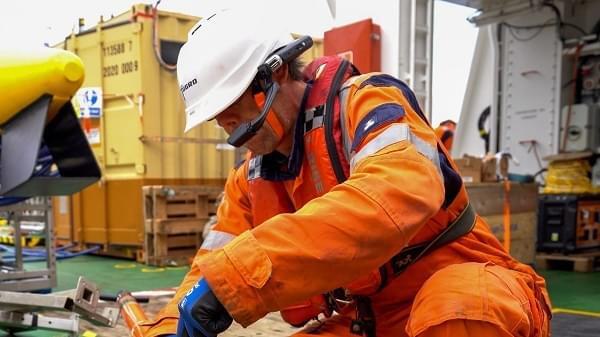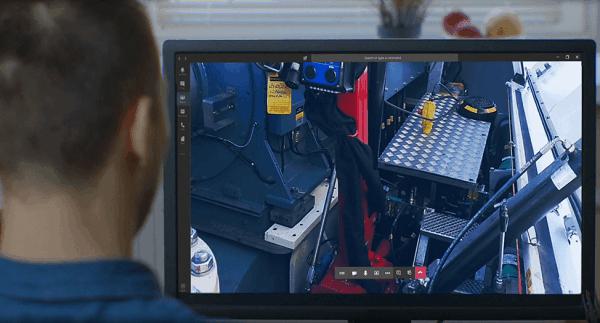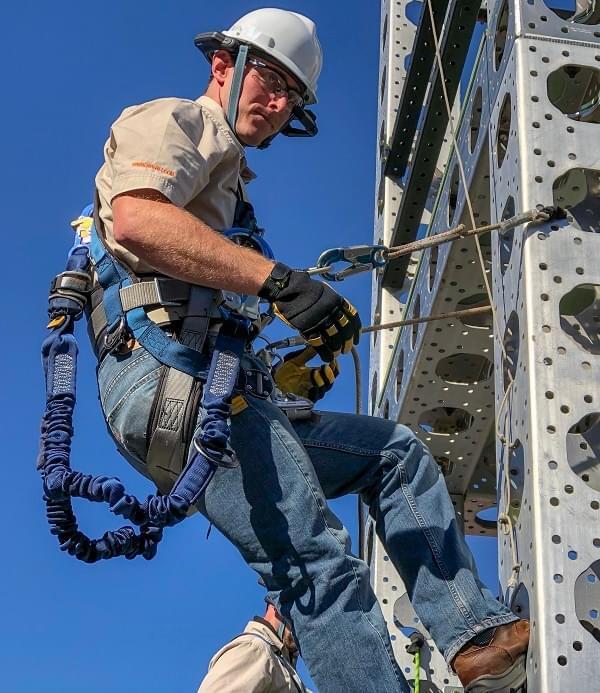The COVID-19 pandemic showed how unprepared some organizations are to major disruptions. With travel restrictions and social distancing guidelines, many companies in the industrial sector were forced to scale back productivity to ensure the safety of their essential frontline workers, equipment experts, project supervisors, and clients.

This is in stark contrast to knowledge workers who continue to work remotely. This reduction in efficiency across the workforce highlights the importance of a digital transformation strategy and how an Industry 4.0 approach can ensure business continuity.
Although industrial workers are deskless and unable to work from home, they can be a connected worker with technologies that integrate them into their worksite and empower them with real-time information.
Here are five ways connected workers were able to maximize productivity during the pandemic.
1. Connected Workers Reduce Operational Costs
During the early months of the pandemic, health officials didn’t fully understand the virus and COVID-19 testing was unreliable. Many countries advised (and enforced) 14-day quarantines for suspected exposures and traveling plummeted. Unfortunately, many organizations had factories or worksites all over the world and relied on air travel to allow technical experts to maintain and repair equipment.
Fugro, one of the world’s biggest geodata specialists, found itself in this situation when it needed to send an engineer to repair a vessel. Given the pandemic, the traveling engineer would be quarantined a total of 28 days — 14 days before deployment and another 14 days after completing the job.
Fortunately, Fugro recently deployed RealWear voice-enabled headsets at this particular vessel. An assisted reality headset worn by a worker on the vessel allowed an engineer from the other side of the world to remotely see what the onsite worker saw. Together, the onsite worker and remote engineer collaborated in real-time to fix the issue in eight hours — saving the engineer 28 days of quarantining.

Going forward, this shows how connected workers can reduce costs associated with travel, lost time, and extended equipment downtime through the use of augmented reality.
2. A Single Connected Worker Can Support Group Interactions
Traditional site walk-downs are usually completed with multiple stakeholders traveling to a client’s location. This simply wasn’t a possibility during the pandemic with travel restrictions and social distancing.
However, a single connected worker can host a video conference and give remote stakeholders live virtual tours of the site. Questions can be answered immediately by the onsite worker or a remote expert participating on the call.

3. Connected Workers Are Safer Workers
While the pandemic shined a spotlight on how close workers are to each other, there was always a strong emphasis on worker health and safety in industrial sector jobs. Many frontline workers are often surrounded by hazards, such as working in heavy seas, at great heights, in potentially explosive atmospheres, or next to heavy machinery.
Hands-free devices are one of the leading technologies in the industrial sector’s digital transformation. They are crucial in many frontline jobs where a worker must manually work with tools or manage safety equipment.

Those that are designed with safety in mind from the ground up gives workers the information they need without distracting them from the hazards of their worksite. Many smart glasses, in contrast, are not suitable for hazardous environments due to high failure rates and low battery life. The head-worn wearable computer is compatible with most types of PPE, including hardhats, eye and ear protection, hazard suits, and more.
4. Connected Workers Achieve Faster Resolution Rates
Frontline workers can sometimes find themselves with hard-to-diagnose issues that require the support of a larger team. The pandemic made group gatherings impossible, but connected industrial workers often have the technology they need to collaborate.
By being able to connect with specialists at the point of need and collaborate in real-time, connected workers can achieve impressive first-time resolution times and first-time fix rates. Some industrial organizations saw up to a 93% improvement in their efficiency with a connected workforce.
Remote collaboration was already around before the pandemic. But the pandemic proved that efficient knowledge sharing is vital to business continuity and should be a component of their operational strategy.
5. Connected Workers Are Empowered Workers
If knowledge is power, then the right knowledge at the right time is empowering. Connected workers can access relevant information when they need it, whenever they need it.

For example, the RealWear HMT hands-free headsets can access and display most forms of multimedia, including documents, images, videos, and more. This allows workers to reference equipment documents, access important proprietary information, or hold a video call with a remote mentor.
Connected Workers in a Post-Pandemic World
Industrial and manufacturing organizations have traditionally been slow to implement integrative technology into their worksites. However, if the industry has learned one thing from the pandemic, it’s that connected workers can support business continuity and offer incredible flexibility during major disruptions.
With a post-pandemic world in sight, connected workers can mean something more exciting for organizations: greater efficiency, productivity, and returns.
Learn more about RealWear and how it can create a connected workforce. You can also join them for Episode One of LiveWorx 2021: The Limited Series to learn “How Work Methods are Changing The Workplace”.






